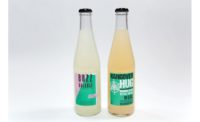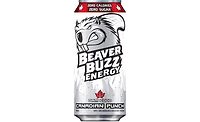Caffeine Buzz
Sarah Theodore, Editor
The growth of energy drinks during the past several years has many people asking how much caffeine is too much. So far, there seems to be no definitive answer. Most reports indicate moderate consumption of caffeine is perfectly safe, but others argue too much causes anxiety, sleeplessness, headaches, nausea and irregular heartbeat. The vast majority of American adults consume caffeine in some form, whether it’s in a morning cup of coffee, tea, soft drink or even chocolate. But it is hyperactive sales in the energy drink category that has brought caffeine consumption to the forefront.
Last month, New York City councilman Simcha Felder
proposed a resolution that would require companies to indicate caffeine
content on labels. Companies currently are required to list caffeine as an
ingredient but they do not have to state the amount of caffeine in the
product. Shortly after Felder’s proposal, Coca-Cola and Pepsi-Cola
both announced they would list the caffeine content of their products. The
announcements were not necessarily in response to the proposal — both
companies said it is part of an industry-wide initiative to give consumers
more information — but the timing shows how prevalent the topic has
become.
As part of that industry-wide initiative, the American
Beverage Association, Washington D.C., published voluntary guidelines for
caffeine labeling that suggest the information should be separate from the
ingredient statement, the nutrition facts panel and all other information
on the panel. The content would be listed in milligrams per serving as well
as per package if the nutrition label also includes per-package
information.
This is one of those cases in which changing the
labeling can only benefit the companies that provide the information
— at least the ones that include reasonable and responsible amounts
of caffeine. Consumers looking to avoid the ingredient can more easily
determine which products to buy, and the growing number of consumers who
are in search of a caffeine kick also can find what they want.
More importantly, energy drinks are part of the entire
industry’s march toward functionality, which has created excitement,
but has the potential to create confusion and skepticism unless there is a
little more transparency when it comes to ingredients. According to
Information Resources Inc., twice as many 2006 New Product Pacesetters
— those that achieved sales of at least $7.5 million in their launch
year — offered added nutrients, compared with the 2005 Pacesetters.
And the introductions so far this year show no slowdown in sight. If the
industry is going to base so many of its new products on functional claims
— whether they be increased energy or added vitamins and minerals
— it ought to be willing to let consumers know exactly what, and how
much, they are getting.
Sneak Peek
APRIL
Cover story — Coca-Cola Consolidated’s BYB Brands
Category Focus — Beer report
Beverage R&D — Up & coming flavors
Distribution — Fleet maintenance trends
Logistics — Distribution software
MAY
Cover story — Honest Tea
Category Focus — Wine and spirits
Beverage R&D — IFT preview
Packaging — Packaging trends survey
Distribution — “Summerizing” trucks
Cover story — Coca-Cola Consolidated’s BYB Brands
Category Focus — Beer report
Beverage R&D — Up & coming flavors
Distribution — Fleet maintenance trends
Logistics — Distribution software
MAY
Cover story — Honest Tea
Category Focus — Wine and spirits
Beverage R&D — IFT preview
Packaging — Packaging trends survey
Distribution — “Summerizing” trucks

